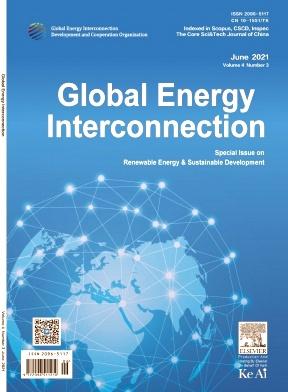Electrical and aging modeling of PEM water electrolyzers for sustainable hydrogen production: Insights into behavior, degradation, and reliability
IF 2.6
Q4 ENERGY & FUELS
引用次数: 0
Abstract
Proton Exchange Membrane Water Electrolyzers (PEMWE) are efficient and sustainable hydrogen production devices. This article analyzes their static and dynamic electrical models integrated with degradation mechanisms. Static models reveal steady-state behavior, while dynamic models capture transient responses to input variations. The developed modeling approach combines the activation and diffusion phenomena, resulting in a novel PEMWE model that closely reflects real-world conditions and enables fast simulations. The electrical model is integrated with the aging model through two key ratios, surface degradation ratio and membrane degradation ratio, which characterize degradation mechanisms affecting electrode and membrane performance. The linear model using second-order Taylor approximation enables the development of a diagnosis approach that can contribute to estimating the remaining useful life of PEMWEs. By associating aging models with electrical models through the proposed ratios, a deeper understanding is achieved regarding how degradation phenomena evolve and influence electrolyzer efficiency and durability. The integrated framework enables predictive maintenance strategies, making it valuable for industrial hydrogen production applications.
用于可持续制氢的PEM水电解槽的电气和老化建模:对行为,退化和可靠性的见解
质子交换膜水电解槽(PEMWE)是高效、可持续的制氢设备。本文分析了它们的静态和动态电学模型,并结合退化机理进行了分析。静态模型揭示稳态行为,而动态模型捕捉输入变化的瞬态响应。所开发的建模方法结合了激活和扩散现象,产生了一种新的PEMWE模型,该模型密切反映了现实情况,并实现了快速模拟。电学模型通过两个关键比率——表面降解率和膜降解率——与老化模型相结合,表征影响电极和膜性能的降解机制。使用二阶泰勒近似的线性模型使诊断方法的发展能够有助于估计PEMWEs的剩余使用寿命。通过提出的比率将老化模型与电模型相关联,可以更深入地了解降解现象是如何演变并影响电解槽效率和耐久性的。集成框架支持预测性维护策略,使其在工业制氢应用中具有价值。
本文章由计算机程序翻译,如有差异,请以英文原文为准。
求助全文
约1分钟内获得全文
求助全文
来源期刊

Global Energy Interconnection
Engineering-Automotive Engineering
CiteScore
5.70
自引率
0.00%
发文量
985
审稿时长
15 weeks
 求助内容:
求助内容: 应助结果提醒方式:
应助结果提醒方式:


